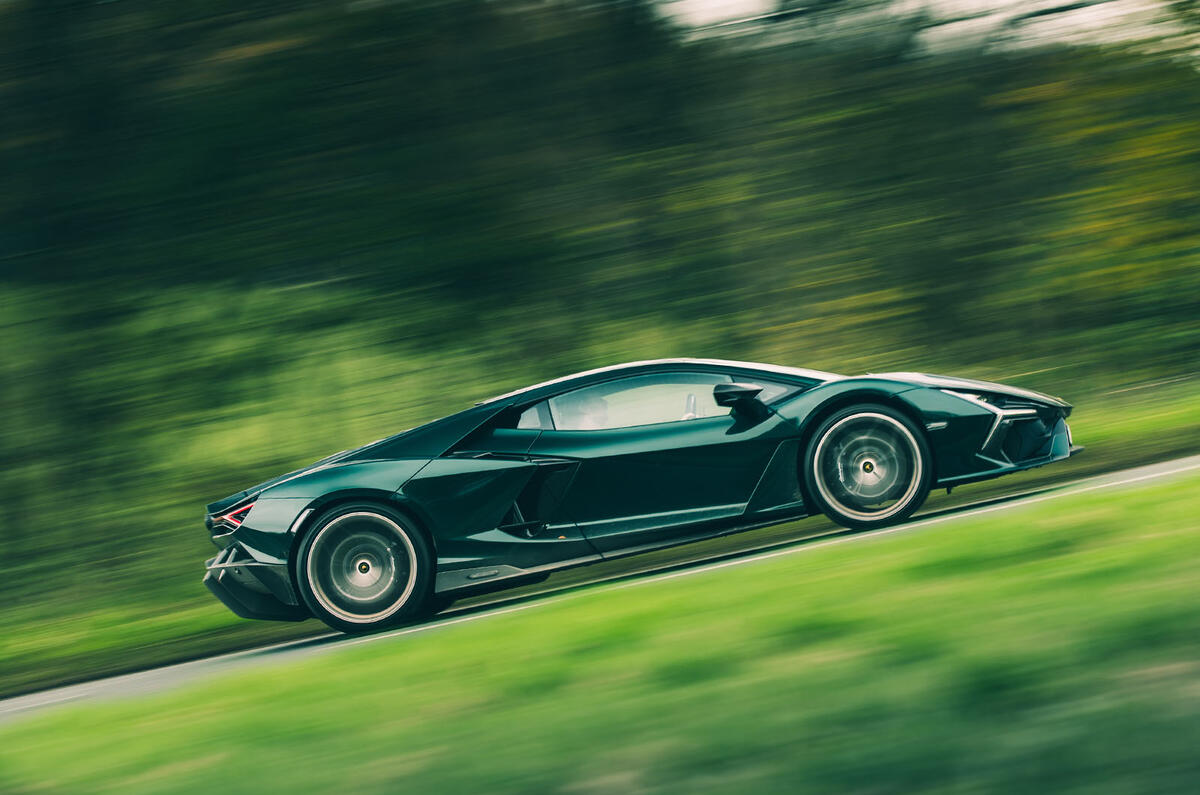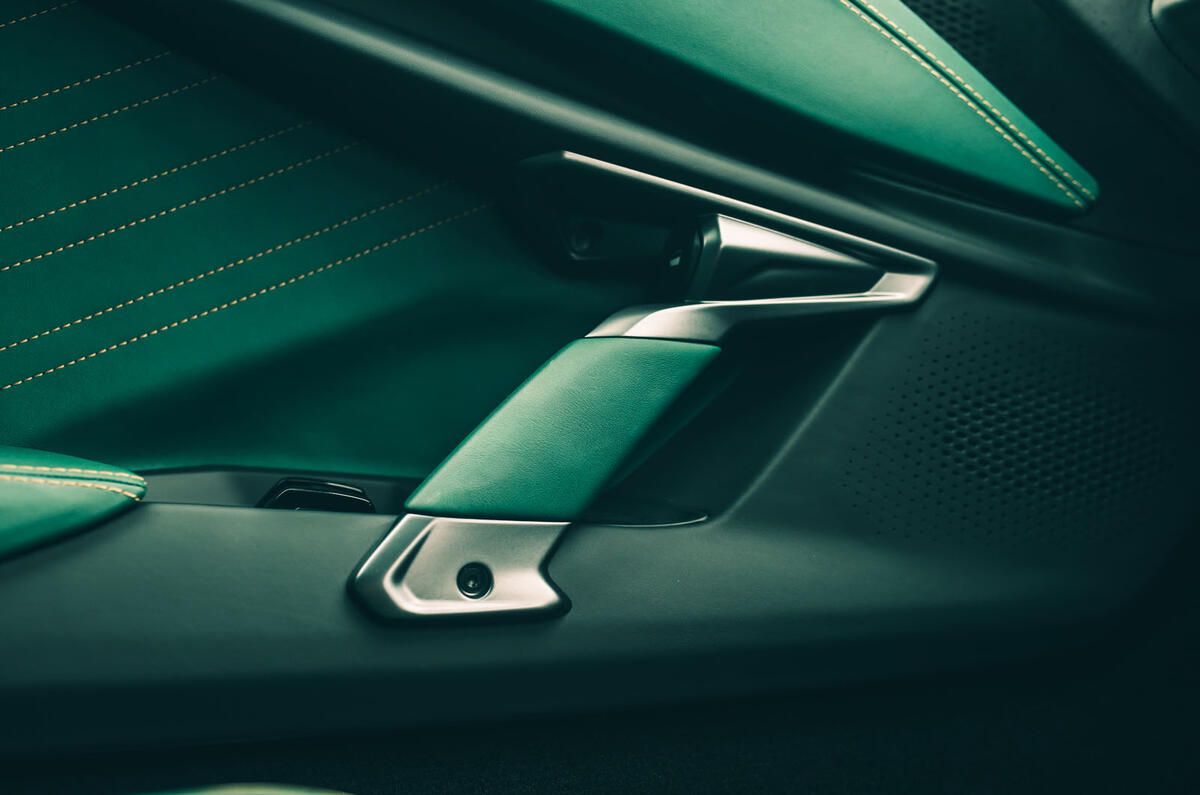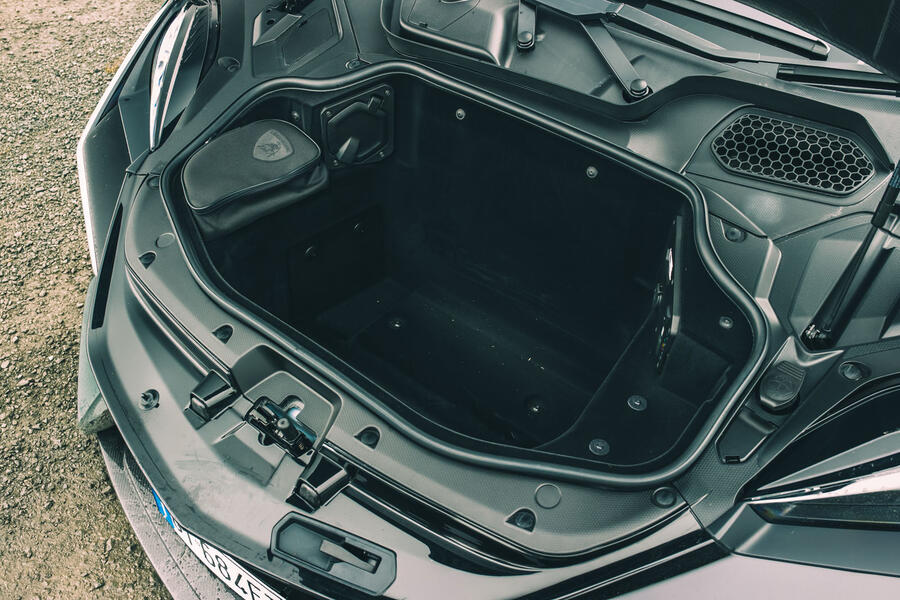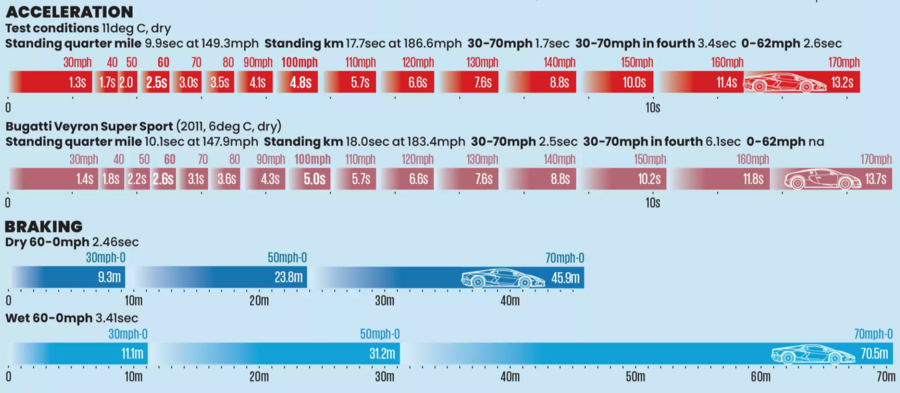With that, to the ‘new’ L545 V12, with its 6.5 litres of swept volume, a 60deg angle and identical cylinder bore and stroke dimensions to the old L539. Technical boss Mohr will admit that this is ostensibly the old mill with new heads and induction system and a lightened block, all modified so that it could be swung through 180deg in the new car. But a higher compression ratio allows it to make 813bhp at 9250rpm and to keep on revving to 9400rpm, which is the kind of crank speed that only the special-series Essenza SCV12 has hit previously.

In fairness, Lamborghini can hardly be criticised for recycling the motor from the Aventador. That engine itself was a clean-sheet design in 2011 and it replaced a V12 that had, in its fundamental design, been in service for nearly 50 years. The Revuelto’s heart is still young by V12 standards and will remain on sale until at least 2030.
But why has it been turned to face the other way? Because the front axle is now driven by a pair of 19kg, 148bhp axial-flux motors, which draw power from a 3.8kWh drive battery that lives in the spine of the car and really does fill the transmission tunnel. (It’s why there isn’t any storage in the centre of the cabin.)
The V12, which almost physically abuts the rear bulkhead, now drives the rear axle alone, its output shaft facing towards the car’s tail. The ICE portion of the driveline is pure rear-driven, in short. And without a driveshaft running underneath it, of course, the V12 can sit lower in the new monofuselage chassis, for which the front subframe is now made from Lamborghini’s patented ‘forged’ carbon, saving 9kg versus the Aventador’s aluminium one.
The use of a carbon front cone structure is a world first, according to Lamborghini. The car also has a fully composite central monocoque, of course, and the entire structure is 25% more torsionally stiff than the Aventador’s, as well as weighing 10% less, at 188kg.
The all-new dual-clutch transmission is lighter than the one in the recently retired Huracán (despite that car’s one less ratio) but, at 193kg, still weighs more than double the automated manual in the Aventador. We can tell you now that the weight penalty is worth it for the shift quality and general drivability, many times over.
There’s a third motor-generator integrated into the gearbox (see ‘Technical focus’, right) and peak system power for the whole powertrain comes to a grand 1001bhp. Of that, 813bhp comes from the V12, so even without hybrid assistance the Revuelto would have been the most powerful Lamborghini road car in history.
For all that the rulebook has been altered, the Revuelto’s weight distribution is remarkably similar to that of the Aventador. It improves slightly to 44:56 front to rear. (The Lamborghini Aventador SVJ had a 43:57 distribution on the scales when we weighed it in 2019.)
In suspension terms, the only notable change is that the Aventador’s jewel-like pushrod spring and damper set-up, easily visible at the back through the engine cover, is no more. The Revuelto uses conventional struts and magnetorheological dampers.

In Detail: electrification and a new gearbox
You’d think that the Revuelto would be largely the same as its predecessor, the Aventador, in terms of layout. After all, both cars are similarly sized, with similar silhouettes, and they have the same-capacity engine and put it more or less in the same place.
But the reality is that they are different beasts. Where the Aventador’s longitudinally arranged gearbox sat ahead of the V12, allowing it to feed an output shaft to the front axle and a Haldex-style coupling, the engine in the Revuelto has been spun through 180deg and is attached to a transversely set gearbox that sits behind it.









































































